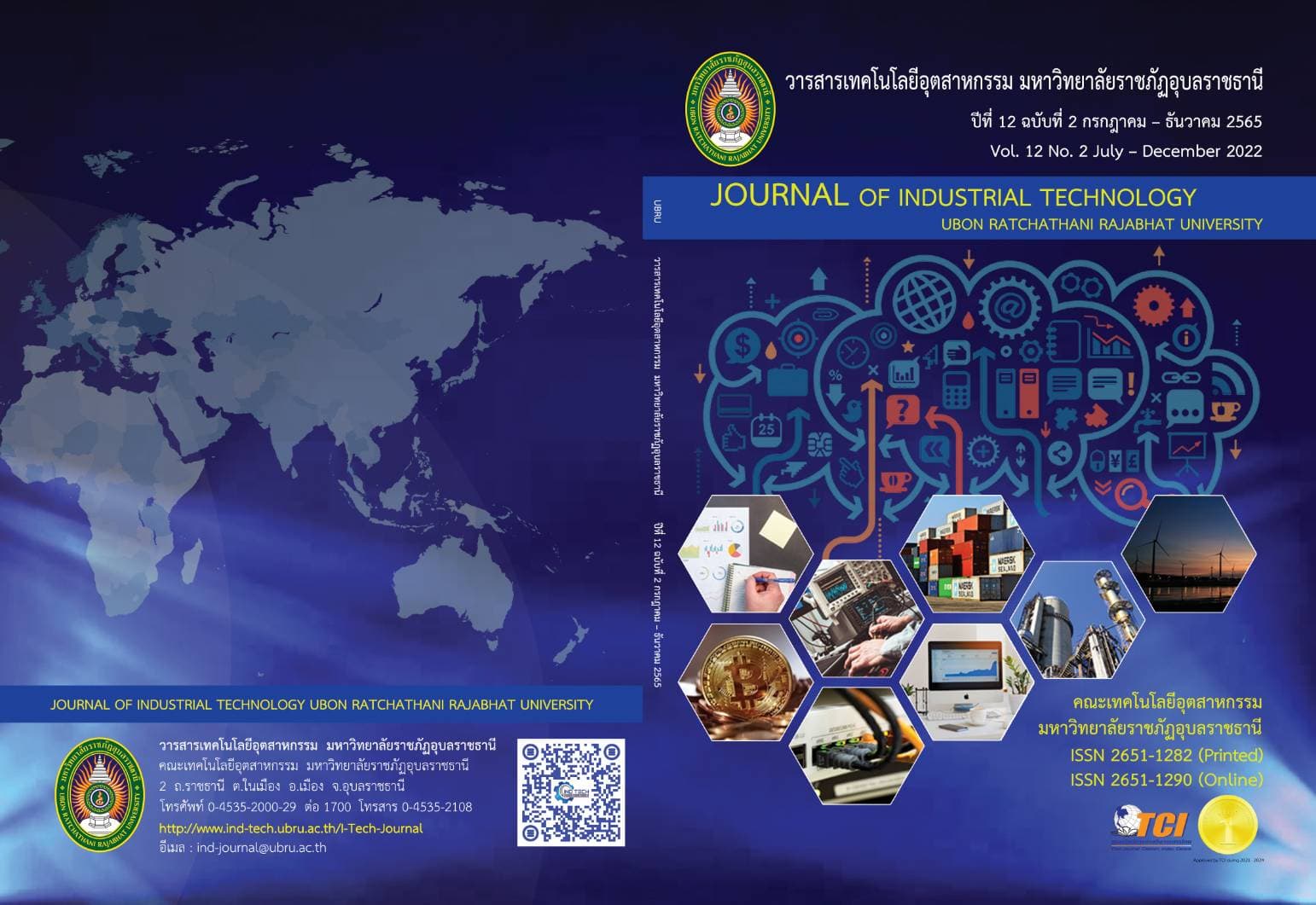The Optimization of Primary Crusher Location in Ball Clay Mine
Main Article Content
Abstract
The 70,000 m2 ball clay mine has a mine life 16 years. The excavation cycle transport in mine is the routine. The research objective is the best jaw crusher position which makes the shortest of total distance in the hauling system. The analyzed methods are the block model, was applied to the non-geometry area. The clay volume from all drill samples has designed in two level depths. Firstly the three displacement theories as Euclidean, Chebyshev and Manhattan were tested to find the best place. Then, the sub level had the slope as the area boundary. This condition was solved by the shortest path of Dijkstra’s algorithm. The best position of crusher has given the total distance of a project as 1,237 units. The worst case of crusher position has been evaluated the total distance of a project as 2,453 units. It can reduce 43% of distance in this project. So, the good mine planning can design in the small scale without the package software. The beneficial of this research can reduce the excavation cost, hauling time, logistic management cost, the dust from logistic, the gas emission and environment impact. Finally, this methodology can apply in various applications such as earth works, back fill works and overburden movement.
Article Details

This work is licensed under a Creative Commons Attribution-NonCommercial-NoDerivatives 4.0 International License.
Articles published in Journal of Industrial Technology Ubon Ratchathani Rajabhat University both hard copy and electronically are belonged to the Journal.
References
Carty, W. M., & Senapati, U. (1998). Porcelain—raw materials, processing, phase evolution, and mechanical behavior. Journal of the American Ceramic Society, 81(1), 3-20. DOI:10.1111/ j.1151-2916.1998.tb02290.x
Kes, M. (2007). Determination of the particle interactions-rheology-suface roughness relationship for dental ceramics (Master's thesis, İzmir Institute of. Technology).DOI:10.1016 /j.jeurceramsoc2009.04.015
Chandrasekhar, S., & Ramaswamy, S. (2002). Influence of mineral impurities on the properties of kaolin and its thermally treated products. Applied clay science, 21(3-4), 133-142. DOI:10.1016/S0169-1317(01)00083-7
Hall, P. L., Angel, B. R., & Braven, J. (1974). Electron spin resonance and related studies of lignite and ball clay from South Devon, England. Chemical Geology, 13(2), 97-113.DOI:10.1016/ 0009-2541(74)90002-3
Wilson, I. R. (1998). The constitution, evaluation and ceramic properties of ball clays. Cerâmica, 44(287-288), 88-117.DOI:10.1590/S0366-691319980004000027.
He, M. X., Wei, J. C., Lu, X. M., & Huang, B. X. (2010). The genetic algorithm for truck dispatching problems in surface mine. Information technology journal, 9(4), 710-714. DOI:10.3923/itj.2010. 710.714
Saito, T., & Toriwaki, J. I. (1994). New algorithms for euclidean distance transformation of an
n-dimensional digitized picture with applications. Pattern recognition, 27(11), 1551-1565. DOI:10.1016 /0031-3203(94)90133-3
Bozer, Y. A., Schorn, E. C., & Sharp, G. P. (1990). Geometric approaches to solve the Chebyshev traveling salesman problem. IIE transactions, 22(3), 238-254.DOI:10.1080/ 07408179008964179
Medrano-Marqués, N. J., & Martín-del-Brío, B. (1999, June). Topology preservation in SOFM: an euclidean versus manhattan distance comparison. In International Work-Conference on Artificial Neural Networks (pp. 601-609). Springer, Berlin, Heidelberg.DOI:10.1007/BFb0098218
Fadzli, S. A., Abdulkadir, S. I., Makhtar, M., & Jamal, A. A. (2015, December). Robotic indoor path planning using dijkstra's algorithm with multi-layer dictionaries. In 2015 2nd International Conference on Information Science and Security (ICISS) (pp. 1-4). IEEE.DOI:10.1109/ICISSEC.2015. 7371031


